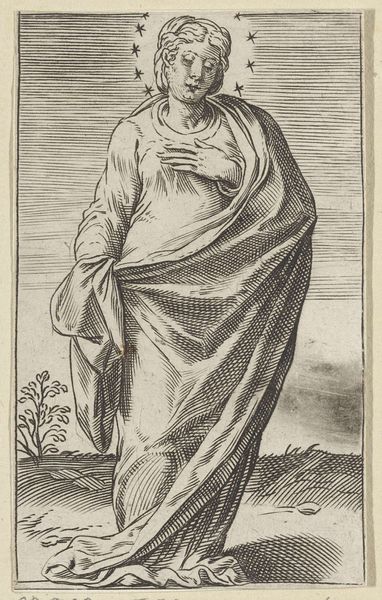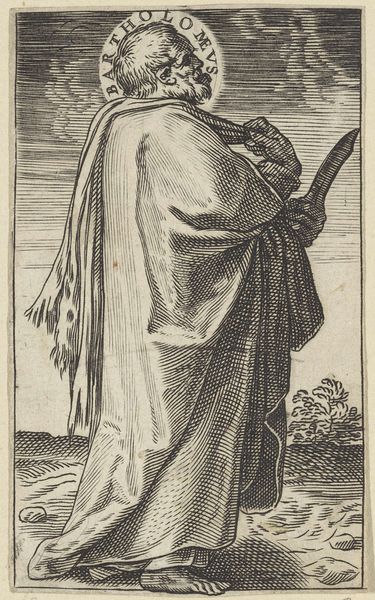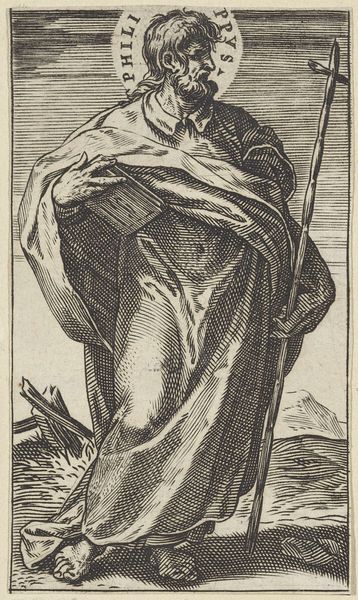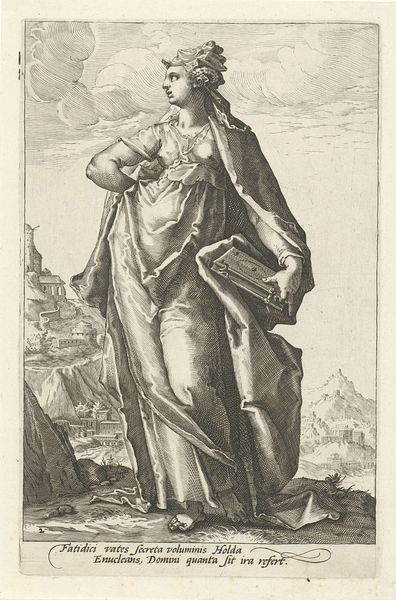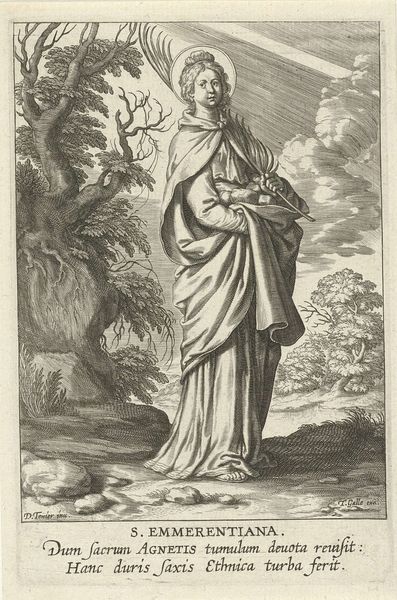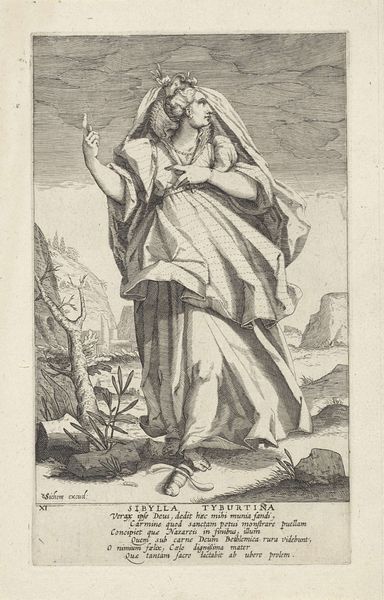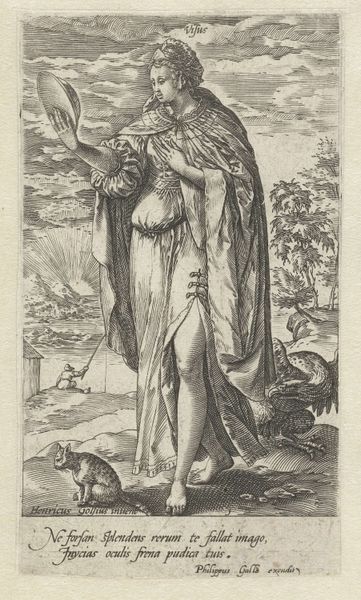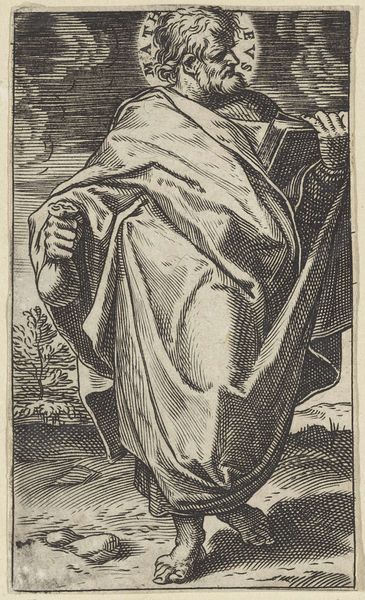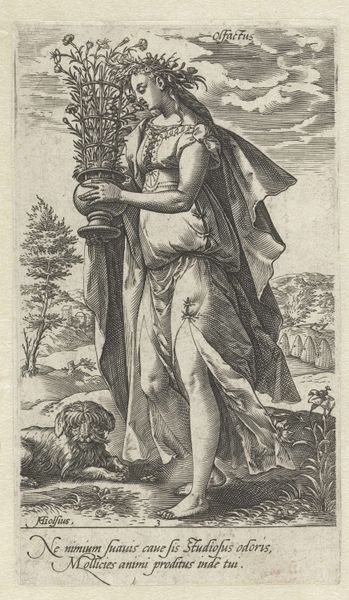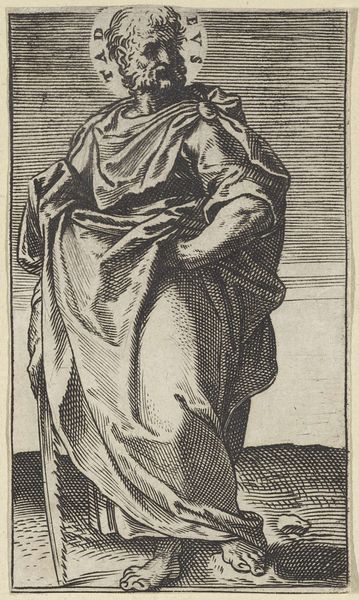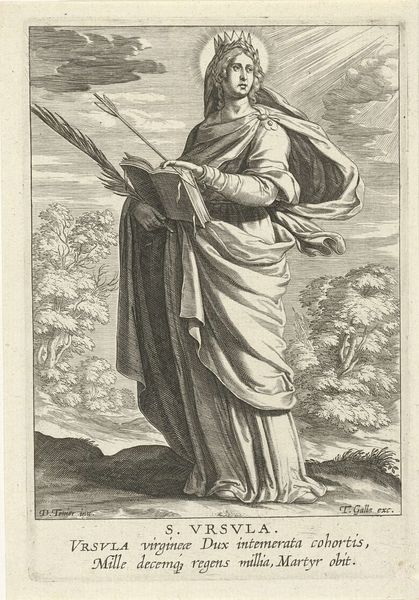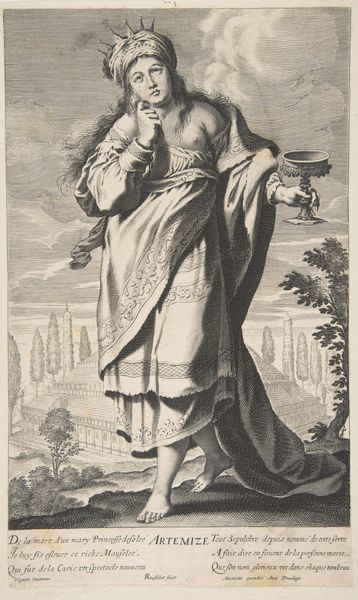
drawing, print, ink, engraving
#
portrait
#
drawing
#
medieval
#
pen drawing
# print
#
mannerism
#
figuration
#
11_renaissance
#
ink
#
line
#
engraving
Dimensions: height 107 mm, width 64 mm
Copyright: Rijks Museum: Open Domain
Curator: Agostino Carracci, a prominent figure in late 16th-century Italian art, created this piece around 1583. The work, titled "Apostel Johannes met een kelk," employs engraving and ink. What are your initial thoughts? Editor: The somber mood immediately strikes me. The heavy drapery and John's averted gaze evoke a sense of melancholy, almost as if he's burdened by a premonition. It certainly stirs some complex feelings about faith and doubt. Curator: Yes, the lines are remarkably dense. Notice how the artist uses the contrast between light and shadow to define form. The draping is particularly masterful in how it suggests both volume and movement. I find Carracci’s structural rendering here truly superb. Editor: And consider the cultural implications! The chalice is not merely an object, it's a profound symbol of sacrifice and communion. Presenting John with such palpable unease hints at a deep engagement with the socio-political anxieties about religious authority. He almost looks trapped. Curator: True. But perhaps the beauty lies also in the formal tensions created: the subtle interplay of line and texture and its sheer graphic quality, without accounting for religious implications. Editor: While I appreciate the beauty you describe, to look past the iconographic significance seems insufficient. Doesn’t the image reflect a time of religious conflict, where interpretations of faith became critical acts of identity? Look how that heavy chalice nearly subsumes him; the psychological weight is almost palpable! Curator: The crosshatching adds tonal depth, undeniably, as you put it—that’s what communicates what you term its “psychological weight.” But the linear quality remains the artwork's fundamental strength—an intersection of form and line into symbolic understanding. Editor: Agreed! These Renaissance portrayals often navigated dangerous territory, inviting us to reconsider the nature of belief during tumultuous times. Hopefully visitors consider this perspective to complement the artwork’s formal excellence. Curator: I hope visitors take note of this excellent graphic print, the striking line work and rendering of the period; context or no context, that will render the image with potency. Editor: Precisely! It all adds depth to our interpretation, making this encounter with Carracci's work so enriching.
Comments
No comments
Be the first to comment and join the conversation on the ultimate creative platform.
